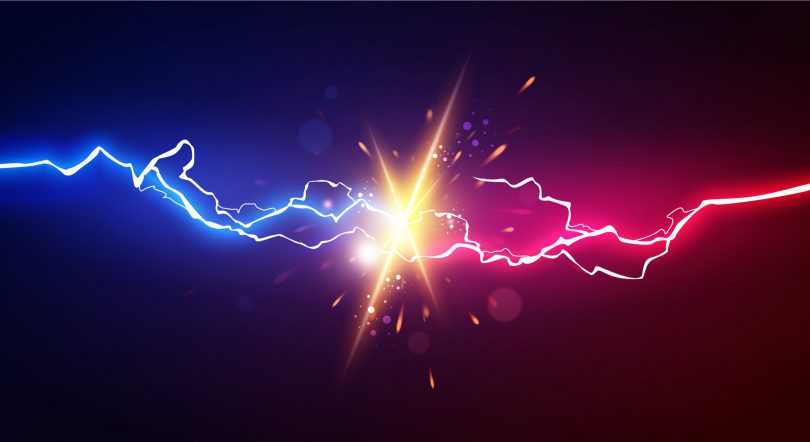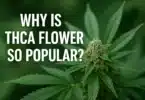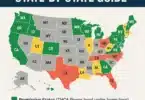As the demand for cannabis research and potent new products continues to soar, it’s becoming increasingly apparent that this plant is much more complex than we ever could have imagined. It seems like every day we’re learning something new about pot, from medical applications and innovative technologies to recently discovered cannabinoids, terpenes, and flavonoids – all with their own interesting effects and benefits.
Lately there has been a lot of talk about Tetrahydrocannabiphorol, or THCP, because it was only very recently synthesized for the first time and, according to the existing research, this THC-like compound is considerably stronger than many of the cannabinoids we’re currently familiar with.
Cannabis is full of fun and interesting compounds including HHC, all the Delta THCs, CBD, and so much more. If you would like to learn more about these cannabinoids, or try out different products make sure to Subscribe to our Weekly Newsletter.
Different ‘Types’ of THC
When we talk about tetrahydrocannabinols as a whole, we are referring to a specific chemical structure known as C21H30O2. This chemical structure is basically the umbrella under which numerous different-yet-very-similar compounds can be created. These molecules, known as isomers, have the same chemical formula but the arrangement of atoms within the molecule can vary – like how the words ‘live’ and “evil’ have the exact same letters, but once you switch up the configuration a bit, the words take on completely different meanings.
Take all the delta THC’s, for example. In Delta 9 THC – which is the most abundant psychoactive compound in cannabis – the ‘9’ represents where the double bond occurs, in this case, on the 9th atom in the carbon chain. When the double bond moves to the 8th atom, it becomes Delta 8 THC, which is an isomer of Delta 9. The same holds true for Delta 10 THC, which is an isomer of Delta 9 with the double bond located on the 10th atom in the chain.
The difference between Delta 8 and Delta 10 is that Delta 8 is a naturally occurring isomer formed via the oxidation of Delta 9 THC, whereas Delta 10 can only be created synthetically. And speaking of synthetics, let’s quickly discuss THC-O-Acetate. This compound is an analog of THC, meaning its chemical structure is similar to delta 9, but differs more than an isomer.
Then we have 11-hydroxy-THC, which has the chemical formula C21H30O3. Although it has ‘THC’ in the name, 11-hydroxy is not THC, nor is it an isomer or analog of THC. Rather, it is metabolite of THC and technically an endocannabinoid, created when our bodies digest any type of tetrahydrocannabinols. It has a very similar chemical structure to all THCs, but as you can see, there is one extra oxygen molecule making this a completely different compound, with similar, but reportedly much more powerful, effects.
THCP, on the other hand, is a special type of THC analog called a homolog. A homolog is a molecule belonging to a series of compounds that differ from each other by a repeating unit. In this scenario, the repeating unit is the alkyl side chain. Delta 9 THC has a 5-term alkyl side chain, which means that it contains 5 total carbon atoms. THCP has an elongated 7-term chain.
THCP: Enhancing THC’s Binding Ability
THCP is one of the newest cannabis compounds to be discovered, having first been documented in late 2019. Again, the main difference researchers found in THCP compared to Delta 9 THC is that THCP has a longer alkyl side chain, which is believed to be a vital factor in the way THCP interacts with the body’s CB1 receptors, compared to other THCs.
In organic chemistry, an alkyl is an alkane that is missing one hydrogen molecule. The term alkyl is intentionally unspecific to include many possible substitutions. Alkyls form homologous series and most of the simplest series have the same general formula.
A minimum chain length of three links is required for THC to bind with the receptors, with binding affinity peaking at eight links before starting to decrease. THCP’s seven-link chain puts it close to the maximum for receptor activity. When researchers checked THCP vs THC binding affinity with both cannabinoid receptors, they found that THCP was 33 times more active at the CB1 receptor and 5-10 times more active at CB2.
What Are The Implications of These Findings?
The main reason this discovery has everyone so excited is because researchers believe that THCP mimics the effects of THC in the body, but at a much more effective rate. Although THCP is a minor phytocannabinoid, its presence can still impact the high via the entourage effect and many in the scientific community believe it can do so more efficiently than other trace compounds.
This brings us to our next questions: as a minor compound, how much THCP is required to produce a noticeable difference in either medicinal or psychoactive effects, and exactly how much THCP is found in most strains? As much as I’d like to give an exact answer, the reality is that the research just hasn’t made it that far yet. The scientists who discovered THCP only had access to one strain, provided by the federal government of Italy, and in it they found very little THCP. However, it’s worth noting this statement in the report claiming that “it is reasonable to suppose that other cannabis varieties may contain even higher percentages,” although we can’t say that for sure without actual lab testing.
Other experts disagree, such as Dr. Samuel Banister from The University of Sydney, who believes the difference in effects is not that substantial. “While this possibility cannot be ruled out,” Banister stated, “the known potency differences for THC and THCP at cannabinoid receptors is relatively small, while the difference in abundance of each in cannabis is enormous. The same is true of CBD and CBDP, although CBD requires even higher doses to achieve many of its pharmacological effects. For this reason, I do not feel that minor or trace phytocannabinoids like THCP or CBDP contribute significantly to the psychoactive effects of different cannabis strains.”
Bottom line, more research needs to be done in order to get a better idea of the full scope of THCP’s recreational and pharmaceutical potential. There is no way to put an exact number on how much stronger THCP is, or how much better it works than THC, if we don’t have repeatable research and solid data to reference to.
THCP Products… Where to Find Them, and Are They Safe?
Because so little is known about THCP, it’s impossible to say with 100 percent certainty whether it is safe or not. Because it’s a cannabis compound, one can assume that it has a relatively good safety profile. The consumer always assumes a certain level of risk when buying new, trendy, and barely-studied products, and this is true in more industries than just cannabis.
All that said, a few companies are already selling THCP products, and whenever we stumble on good-quality ones, we’ll make sure to include them in our newsletter. So far, all we’ve been able to source are vape carts and gummies, but either one is a great option if you’re interested in sampling THCP to see if this cannabinoid is right for your needs. As demand intensifies and more research becomes available, an inevitable wave of new products will hit the market.
Conclusion
Cannabis has hundreds of different compounds, some major, some minor, some potent, some non-psychoactive. With so many restrictions in place, it’s impossible to know everything about certain cannabinoids at this point. The first discovery of an individual cannabinoid was in 1940, and THCP was just documented less than 2 years, so it’s one of those subjects we’ll continue to learn about for a very long time. In the near future, additional information will be revealed about cannabis, giving us a more complete picture of what the plant and all of its compounds can really do.







